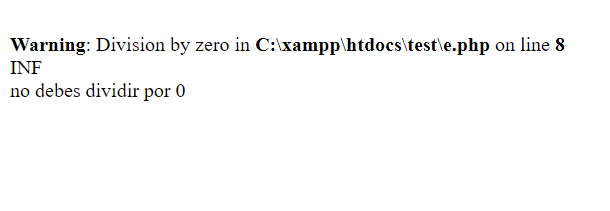Exception handling in PHP
What is an exception?
An exception indicates that there is a problem while running an application.
Here’s a quote from Wikipedia on exception handling:
Exception handling is a programming technique that allows a programmer to control errors that occur during the execution of a computer program.
(wikipedia.org)
So, how do we handle exceptions in PHP?
In PHP, we can throw an exception using the throw keyword and catch it with catch.
To make it easier to handle exceptions, it is recommended to place the code where the error might occur inside a try block, which must have at least one catch or finally block, or both.
Let’s go over each of these blocks:
- try: Contains the code that may cause a possible exception. This code is executed unless an exception is thrown.
- throw: With
throw, we can trigger an exception. This means that even if the code doesn’t technically have an exception, we define it as such. - catch: The
catchblock catches the exception. Insidetry, we can have multiplecatchblocks, allowing us to capture different exceptions and handle each accordingly. - finally: This block is executed whether or not an exception is found. Similar to
catch, there can be more than onefinallyblock.
Example with throw: We’ll create an exception no matter what.
<?php
try{
throw new Exception('una excepcion sin sentido');
}catch(Exception $e){
echo "la excepcion capturada es: ".$e;
}
?>
Alright, let’s see what we get on the screen.

Example without throw: let’s divide by 0.
<?php
try{
$x =1/0;
echo $x;
}catch(Exception $e){
echo $e;
}finally{
echo "<br/> no debes dividir por 0";
}
?>
In this case, we get the following exception:

Reference: php.net

- Anterior: Errores en PHP
- Siguiente: Generadores en PHP



